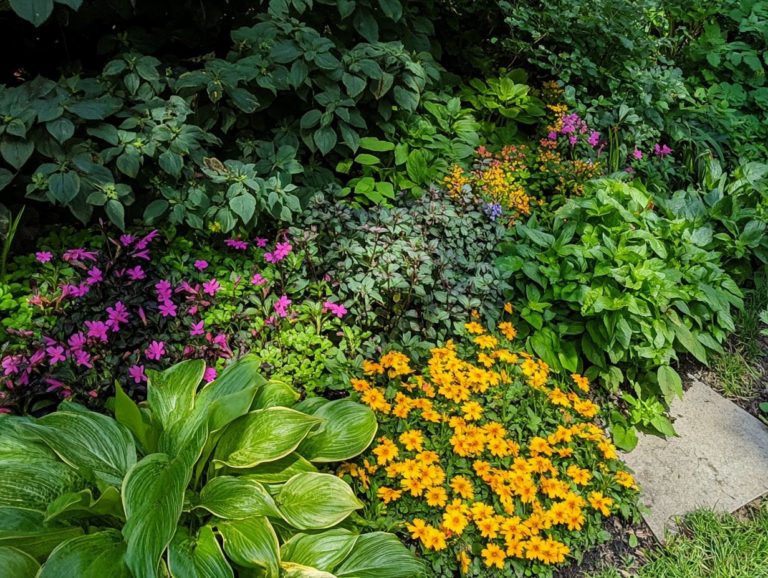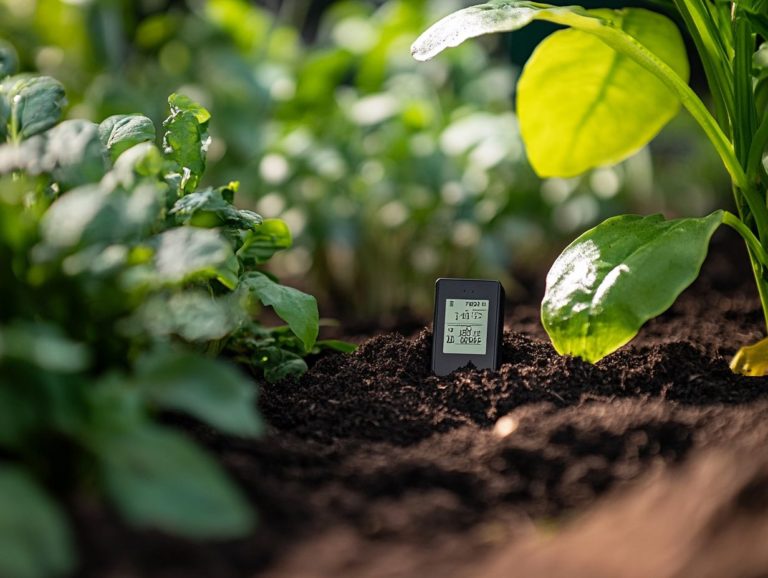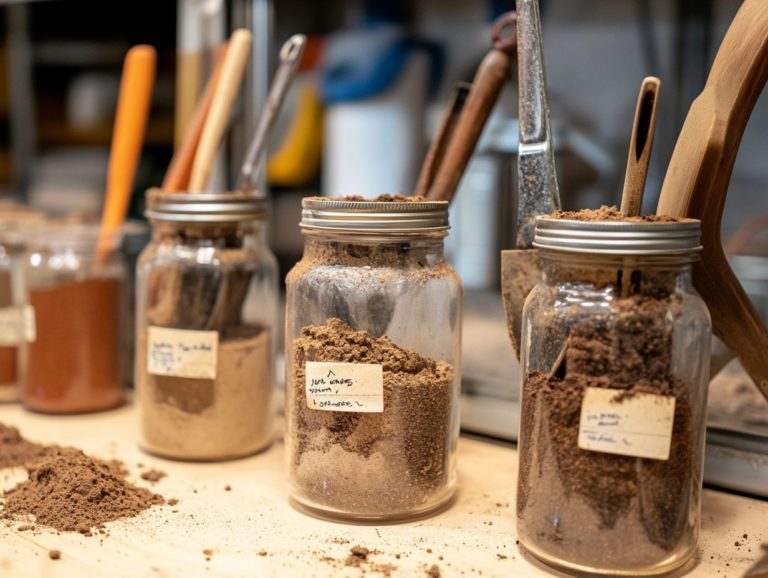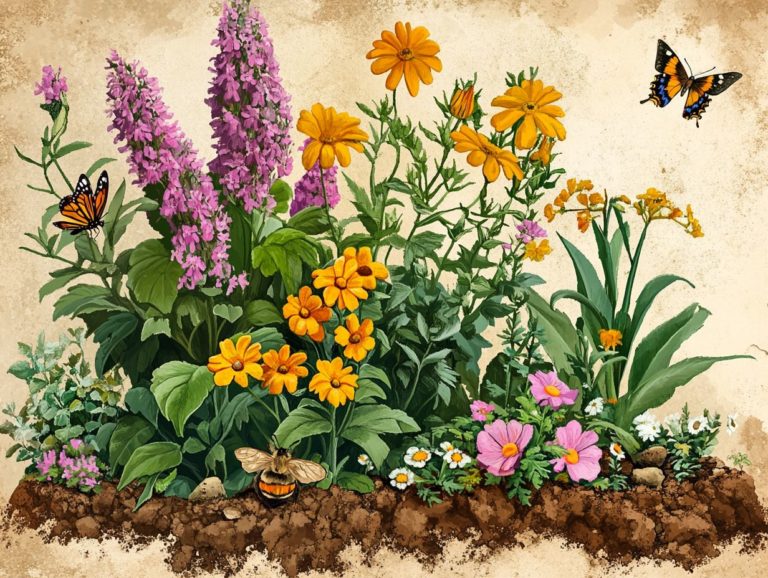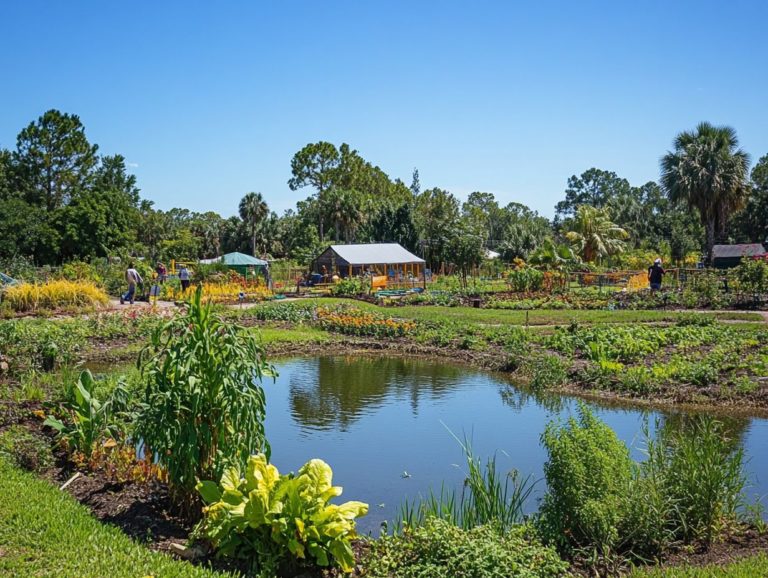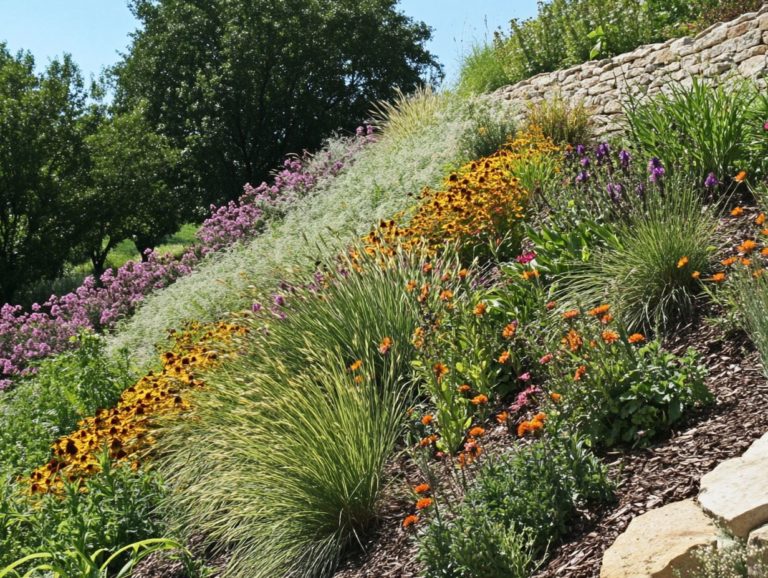The Impact of Soil Erosion on Water Conservation
Soil erosion is a pressing environmental concern that depletes land and significantly impacts water resources. Understanding its causes both natural and human-induced is essential for grasping the broader implications for water conservation.
The consequences are extensive. They include diminished water quality and quantity, as well as adverse effects on ecosystems and agriculture.
This exploration delves into the intricate relationship between soil erosion and water conservation, emphasizing effective prevention strategies. It highlights the vital roles that governments and individuals play in tackling this challenge.
Join us as we tackle this essential topic!
Contents
- Key Takeaways:
- Causes of Soil Erosion
- Effects of Soil Erosion on Water Conservation
- Preventing Soil Erosion for Water Conservation
- The Role of Government and Individuals in Water Conservation
- Frequently Asked Questions
- What is soil erosion and how does it impact water conservation?
- How does soil erosion affect water quality?
- Can soil erosion be prevented?
- What is the role of vegetation in water conservation?
- How does soil erosion impact agriculture and food production?
- What can individuals do to help prevent soil erosion and conserve water?
Key Takeaways:
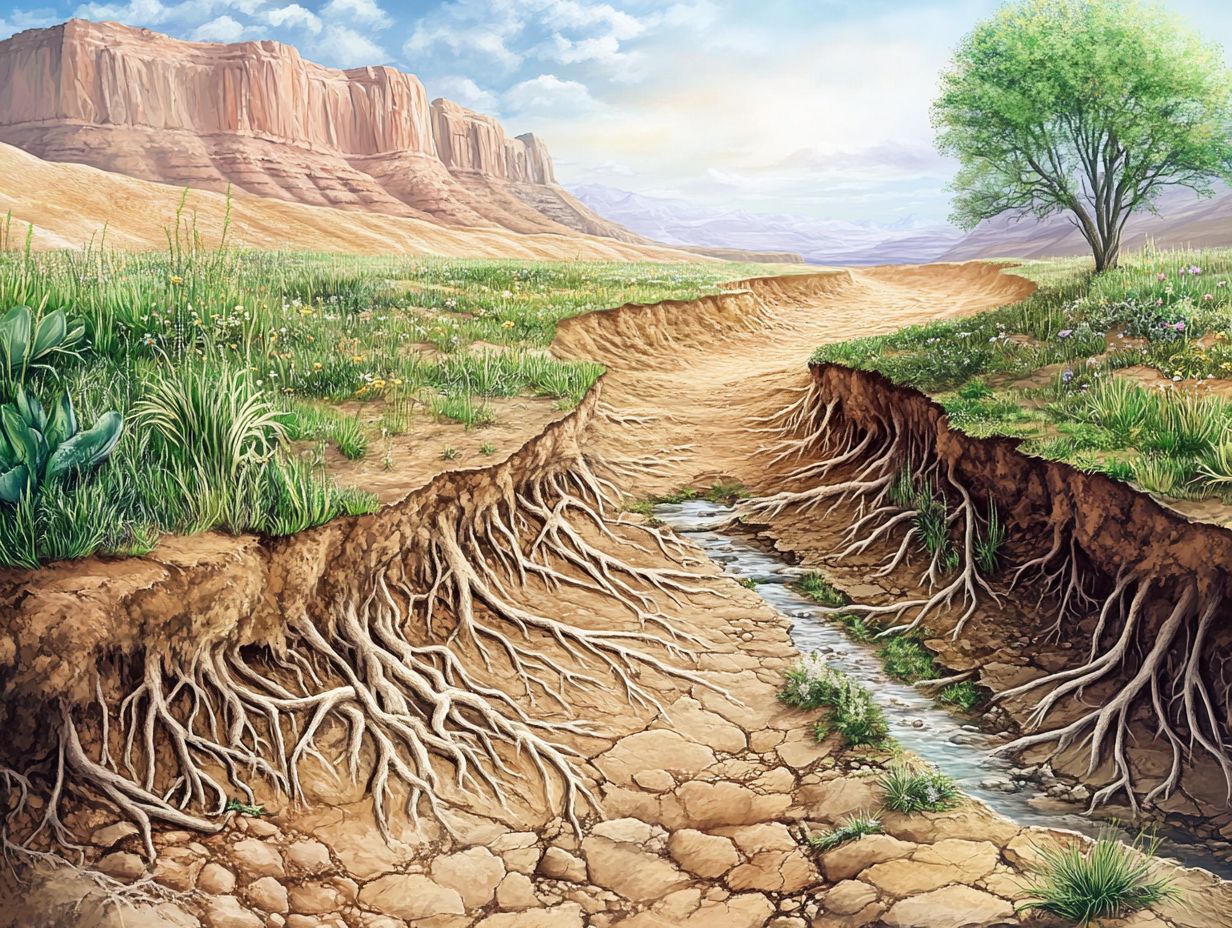
- Soil erosion directly impacts water conservation by reducing both quality and quantity.
- Natural and human factors contribute to soil erosion, highlighting the need for conservation practices and policies.
- Governments and individuals play a crucial role in preserving water resources through efforts to prevent soil erosion and promote conservation.
Defining Soil Erosion and Its Effects on Water Resources
Soil erosion involves the displacement of the top layer of soil, leading to significant topsoil loss and adversely impacting water resources and ecosystems. This issue arises from both natural factors and human agricultural practices, resulting in various impacts that threaten soil health and water quality. This issue demands immediate attention, especially in regions like the Midwest and California, where sustainable land management is essential to combat the effects of climate change.
You can categorize soil erosion into two primary types: water erosion and wind erosion. Water erosion occurs when rainfall and runoff wash away nutrient-rich soil. Wind erosion primarily takes place in arid regions, where strong winds lift and transport dry soil particles. Both types contribute to topsoil degradation, diminishing agricultural productivity and disrupting local ecosystems.
Soil conservation methods are very important. Practices such as contour farming a method of planting across the slope of the land to reduce erosion and reforestation are crucial for sustaining water resources. By preserving soil integrity, you not only maintain agricultural viability but also enhance water quality, ensuring a healthier environment for future generations.
Causes of Soil Erosion
The causes of soil erosion are complex, involving a blend of natural occurrences and human activities. Each factor contributes to the degradation of soil quality and the loss of topsoil, affecting various regions in distinct ways.
Natural and Human Factors
Natural factors contributing to soil erosion include water and wind erosion. However, human influences, like unsustainable farming practices, also compromise ecosystem health, elevating flood risks and triggering dust storms.
Extreme weather events, such as storms, can displace significant amounts of soil. Heavy rains create runoff that washes away the precious top layer of fertile land. Conversely, prolonged droughts dry out the soil, making it more vulnerable to being swept away by wind. These natural occurrences are worsened by human activities like deforestation, which removes tree roots that typically anchor the soil, leading to instability.
Improper agricultural practices, including over-tilling and monoculture, degrade soil structure. The excessive use of agrochemicals further harms soil health, reducing its ability to retain moisture and nutrients. This intensifies the erosion cycle and heightens the risk of environmental degradation.
Effects of Soil Erosion on Water Conservation
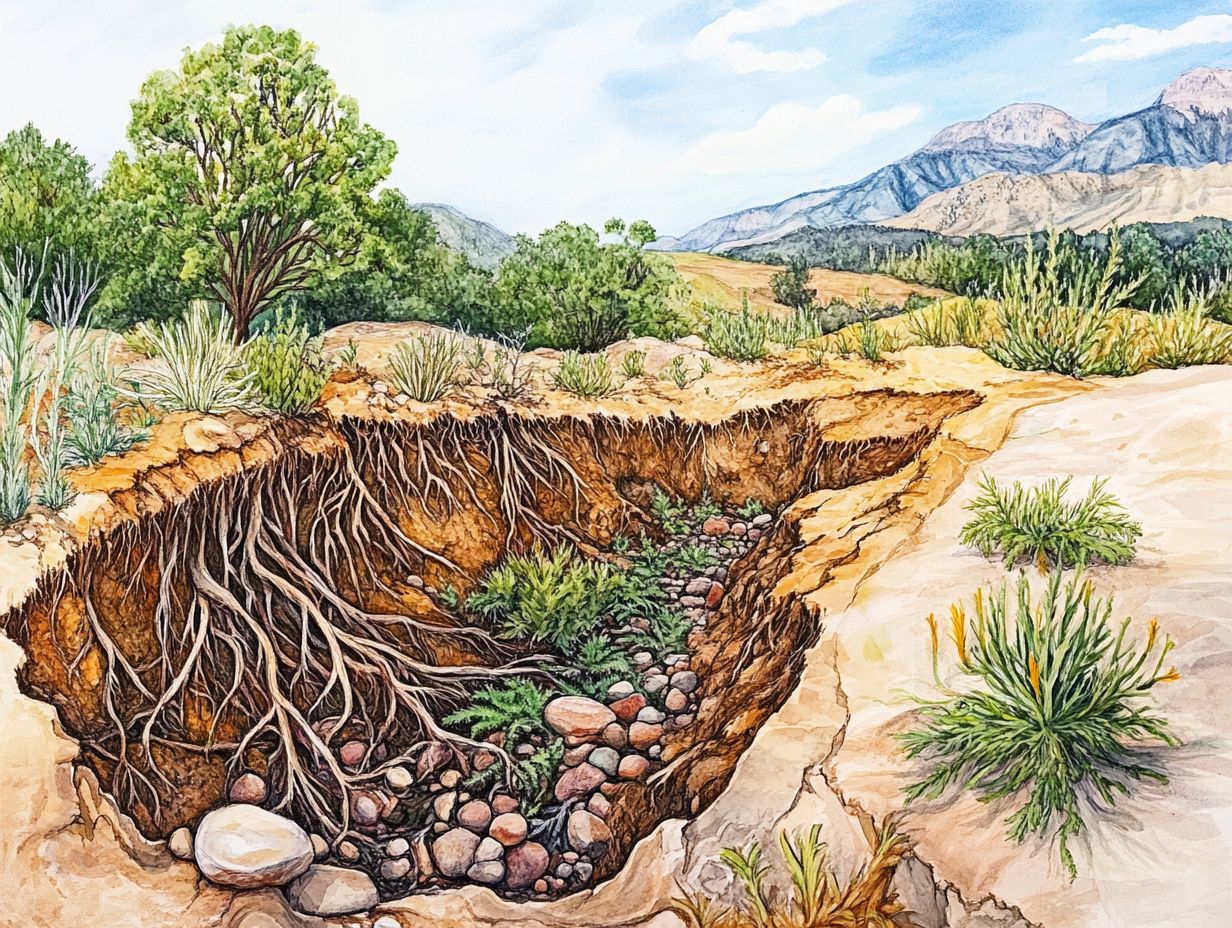
Soil erosion has a profound impact on your water conservation efforts, contributing to heightened agricultural runoff and sediment transport. Understanding the importance of soil conservation in agriculture is crucial, as this degradation compromises water quality and jeopardizes availability, placing your natural resources and ecosystems at risk.
Reduced Water Quality and Quantity
Reduced water quality and quantity are among the most pressing consequences of soil erosion. Sedimentation and agricultural runoff diminish the capacity of water bodies to maintain healthy ecosystems.
As soil erodes, vital nutrients and organic matter are swept away. This leads to a decline in soil fertility, directly impacting agricultural productivity. This phenomenon is starkly evident in regions like the Yellow River. Heavy soil loss has resulted in increased sedimentation, turning once-clear waters into murky streams that can no longer support diverse aquatic life.
In Jakarta, urban erosion worsens flooding. Agricultural runoff laden with pesticides pollutes local rivers and lakes. Ultimately, soil degradation jeopardizes food security and threatens water quality. This situation underscores the necessity of remediation efforts to restore both ecosystems and human health.
Impact on Ecosystems and Agriculture
The impact of soil erosion on ecosystems and agriculture is profound. It affects soil fertility, agricultural productivity, and overall ecosystem health. It s critical that you implement sustainable land care methods.
Erosion strips away nutrient-rich topsoil, which is crucial for healthy crops. It also diminishes the soil’s capacity to retain water, making it less resilient to droughts and extreme weather. This degradation can significantly hinder your crop yields and threaten food security.
Soil ecosystems also suffer as essential organisms that contribute to nutrient cycling the natural process where nutrients move through ecosystems and soil structure are displaced.
Let s take action to address these important issues! Consider employing sustainable practices like cover crops to protect the soil surface and conservation tillage to minimize soil disturbance. These strategies enhance soil health and promote biodiversity, ultimately supporting higher agricultural productivity.
Preventing Soil Erosion for Water Conservation
Preventing soil erosion is essential for effective water conservation. Start using effective erosion control techniques today! Combine erosion control methods and conservation practices to foster sustainable land care and soil restoration.
By doing so, you protect the soil and enhance the overall health of the ecosystem.
Conservation Practices and Techniques
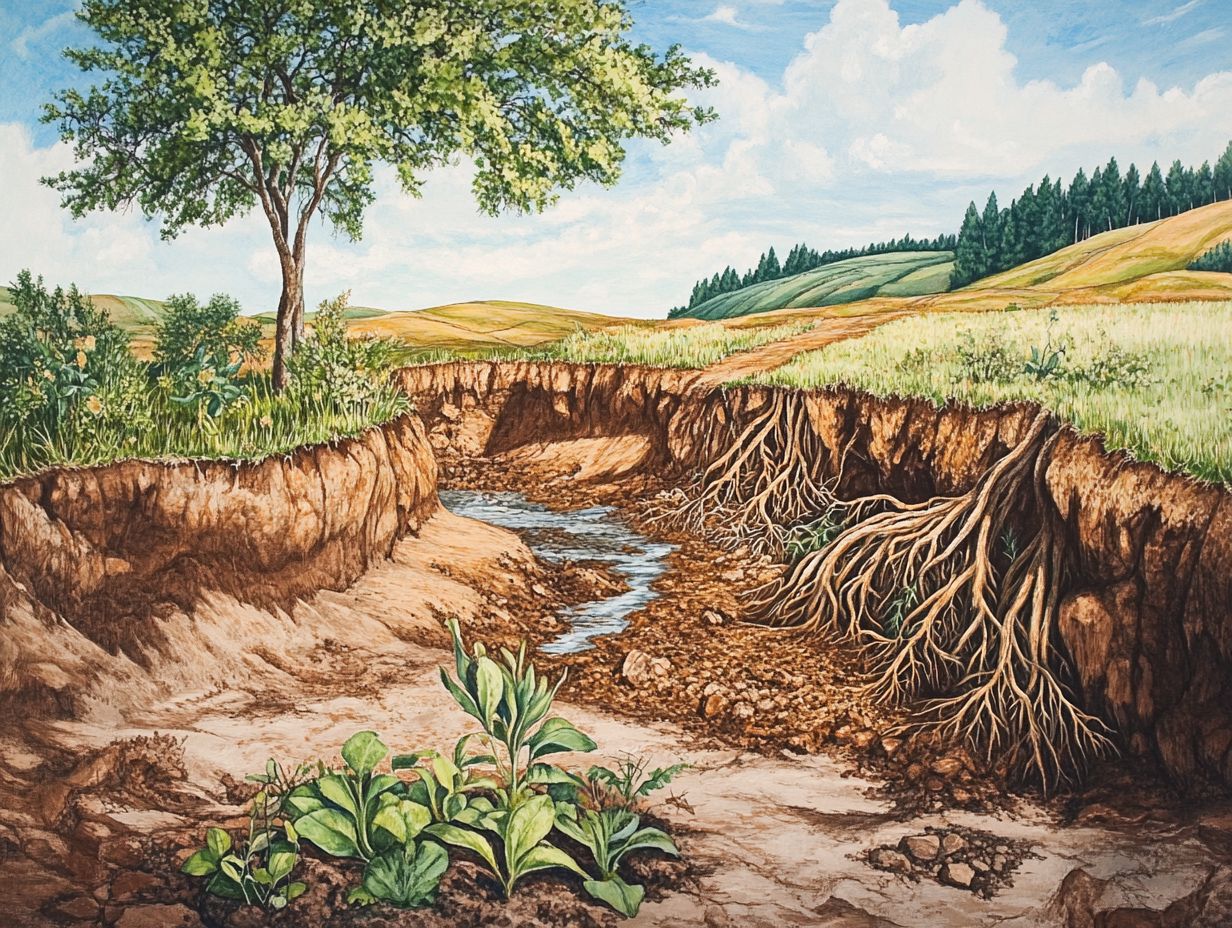
Conservation practices designed to enhance soil health involve implementing erosion control measures and adopting sustainable techniques like cover crops and conservation tillage.
These methods are crucial for preventing soil erosion and maintaining strong crop yields. Farmers in Iowa have seen remarkable improvements in soil structure and water retention after embracing these practices, resulting in increased yields of corn and soybeans.
Case studies from various regions in India show that integrating these techniques into smallholder farming systems safeguards the land from degradation. These methods also bolster food security by increasing agricultural productivity and promoting biodiversity.
The Role of Government and Individuals in Water Conservation
Your role, alongside the government, in water conservation is vital. With effective policies and your personal practices, you can tackle challenges like soil erosion and champion sustainable soil conservation strategies.
Your contributions are essential for fostering a healthier environment for future generations.
Policies and Actions to Address Soil Erosion and Promote Water Conservation
Policies and actions to combat soil erosion are essential for promoting water conservation. Organizations like the Natural Resources Conservation Service lead the way in implementing effective practices.
These initiatives typically involve a blend of government regulations and community involvement. They focus on smart farming methods and restoring vegetative cover to stabilize soil. Local governments are also adopting ordinances that promote the use of cover crops and the establishment of buffer zones areas of vegetation near waterways that filter pollutants.
Engaging local communities through workshops and collaboration with agricultural groups raises awareness about the significance of soil health. Non-profit organizations team up with local groups to create educational programs that highlight the need for soil conservation. This fosters a collective approach that enhances water quality and instills a sense of responsibility toward the environment.
Frequently Asked Questions
What is soil erosion and how does it impact water conservation?
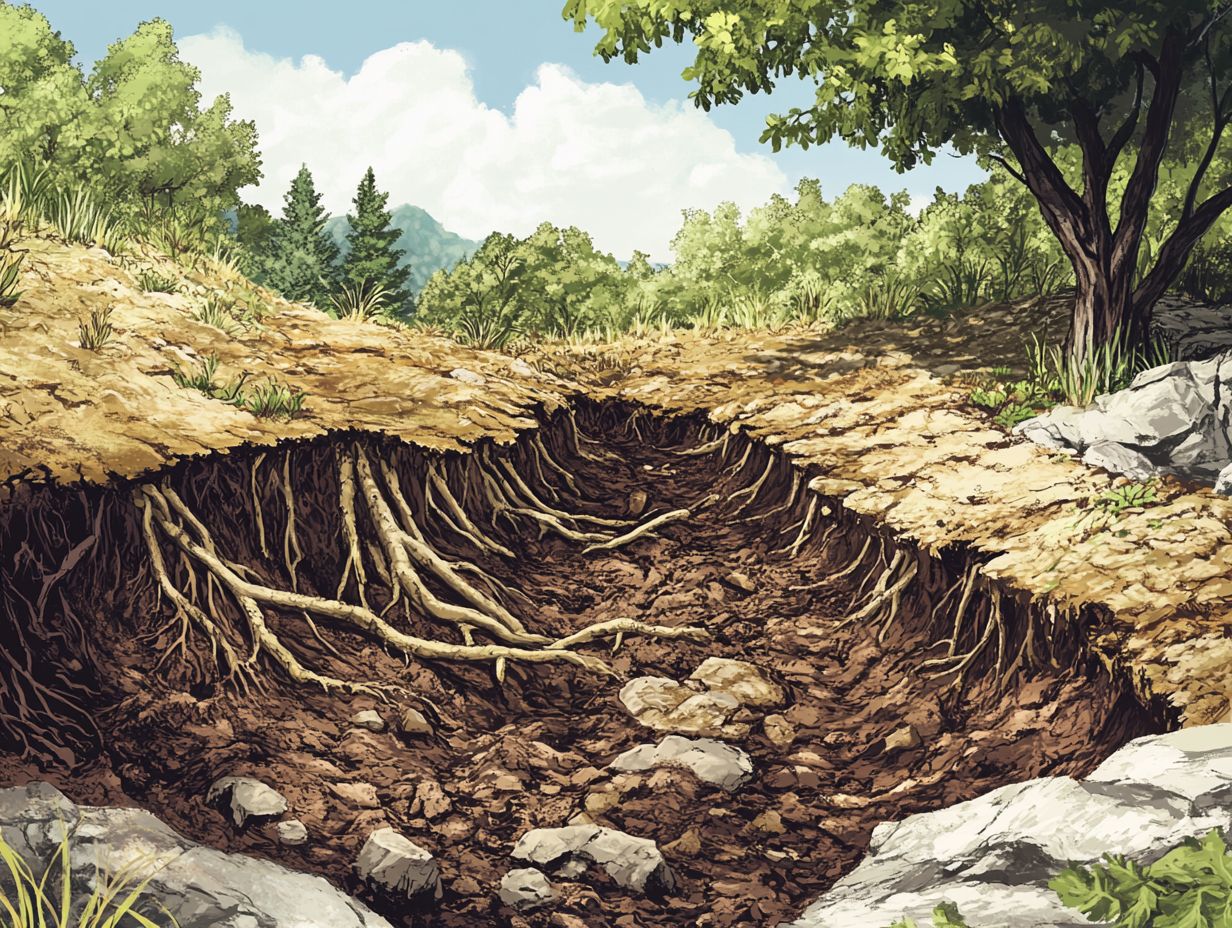
Soil erosion is the process by which topsoil is moved or washed away by natural forces such as wind and water. The loss of topsoil can significantly impact water conservation, leading to decreased water infiltration and storage and increased sedimentation in water bodies.
How does soil erosion affect water quality?
When topsoil is eroded, it can carry pollutants and sediment into water bodies. This negatively impacts water quality by reducing oxygen levels, increasing water temperature, and introducing harmful chemicals and bacteria.
Can soil erosion be prevented?
Yes, various methods can prevent soil erosion. Practices such as conservation tillage, contour farming, terracing, and planting cover crops help protect the soil from being washed or blown away.
What is the role of vegetation in water conservation?
Vegetation plays a crucial role in water conservation by holding the soil in place and reducing erosion. Plants also aid in water infiltration and help maintain stable water levels in streams and rivers.
How does soil erosion impact agriculture and food production?
Soil erosion can significantly impact agriculture and food production by depleting nutrients and organic matter in the soil, making it less fertile. This can lead to decreased crop yields and ultimately affect food availability and prices.
What can individuals do to help prevent soil erosion and conserve water?
Individuals can help prevent soil erosion and conserve water by practicing water-smart gardening techniques like mulching, using native plants, and avoiding overwatering. They can also participate in local conservation efforts and support sustainable agriculture practices.
Act now to protect our soil and water resources!

